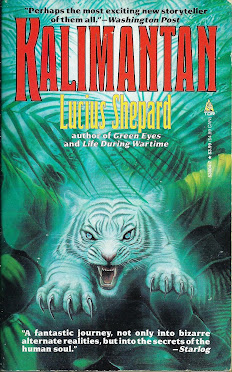According to Brian J. Robb's overview of the genre, Steampunk: An Illustrated History, "Marauder' is one of the first, and most important, of the proto-Steampunk graphic novels.
'Marauder' is set in 1889, and the story begins with the hero, a young medical student named Jerome Plumier, aboard the steamer L'Anjou en route from Murmansk to Le Havre. The ship sails amongst a group of icebergs; it is unusual for icebergs to be so far from the Arctic.
There is astonishment on board the L' Anjou when one of the bergs is seen to have a ship perched atop its needle-like summit. Plumier joins a lifeboat expedition to the berg and joins the crew is scaling to the top of the ice, where the stranded ship, the Iceland Loafer, presents an additional surprise: the entire crew is frozen stiff at their stations....
Barely have Plumier and his companions taken in this strange and troubling sight, when disaster strikes......and Jerome Plumier finds himself involved in a dangerous adventure to discover the truth behind the mystery of the Iceland Loafer.
'The Arctic Marauder' certainly has Steampunk credentials; I won't reveal any spoilers, but the plot delves deeply into Jules Verne - style territory. The plot remains engaging, and while the revelations coming fast and furious in the latter chapters, they are not overly contrived.
Tardi's distinctive pen-and-ink draftsmanship on scratchboard is the real attraction of 'Marauder'. While his human characters are drawn in a cartoony style not unusual among European artists during the 70s, his depiction of architecture, Victorian-era machinery, and the icy landscapes of the Arctic are unusual and display an eccentric craftsmanship quite unlike anyone else in the contemporary comic art scene.
Practically every panel uses intricate arrays of horizontal and vertical shadings, rather than ink wash or watercolor, to lend depth and contrast to the illustrations. I find it hard to believe that Tardi hand-drew all of these striations by meticulously scoring his scratchboard with a needle or scalpel.........
There is more shading and cross-hatching in a single page of 'Marauder', than there is in an entire month's worth of comics published by DC, Marvel, Image, Dark Horse and Dynamite..... Tardi's work, when compared to the artwork in contemporary comic books, might as well be from the 19th century, so different is it in style and execution.
It's for the artwork, and not so much its archival value, that I recommend getting a copy of 'Marauder'.
































































